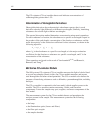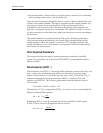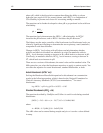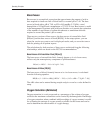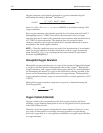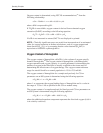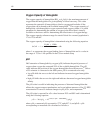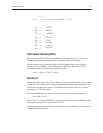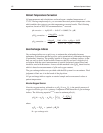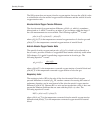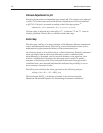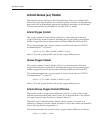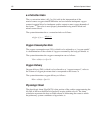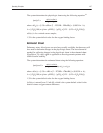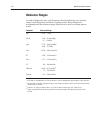
IĆ32 800 Series Operator's Manual
Patient Temperature Correction
All measurements and calculations are based upon a standard temperature of
37.0°C. During sample analysis, you can enter the actual patient temperature value,
which enables the system to provide temperature corrected results. The following
equations, based on NCCLS recommendations,
22
are used:
pH correction + DĂpHńDT + ć0.0147 ) 0.0065Ă(7.4 ć pH)
pCO
2
ĂcorrectionĂ +Ă
DĂlogĂpCO
2
DĂT
+ 0.019
pO
2
ĂcorrectionĂ +ĂĂ
DĂlogĂpO
2
DĂT
+
5.49Ă 10
ć11
pO
3.88
2
) 0.071
9.72Ă Ă10
ć9
Ă ĂpO
3.88
2
Ă)Ă2.30
Gas Exchange Indices
Gas exchange indices are a quick way to estimate the relationship between
pulmonary dysfunction and the hypoxia, and to quantitatively determine the degree
of pulmonary shunting. The primary benefit of using gas exchange indices, is that
they are easy to derive at the bedside. However, they do not have a high level of
correlation with the actual measurement of arterial and mixed venous blood and
should be used with discretion. A more reliable method is the Q
s
/Q
t
shunt fraction,
which is based on measurements of pO
2
and oxygen content.
The gas exchange indices are provided with the 800 system for convenience. Final
judgment of their use is in the hands of the physician.
All gas exchange indices require an arterial sample and use measured values at
patient temperature.
Alveolar Oxygen Tension
Alveolar oxygen tension, referred to as pO
2
(A) or p
A
O
2
, is the partial pressure of
oxygen in alveolar gas. It is a primary component in the detection of gas exchange
indices. The following equation
16,28
is used to estimate pO
2
(A).
pO
2
(A) + p
I
O
2
Ă * p
A
CO
2
ĂĂ
ǒ
F
I
O
2ĂĂ
)
1ĂćĂF
I
O
2Ă
R
Ǔ
where
p
I
O
2
+ F
I
O
2
Ă Ă(ptotalĂćĂpH
2
O)
R = gas exchange ratio



